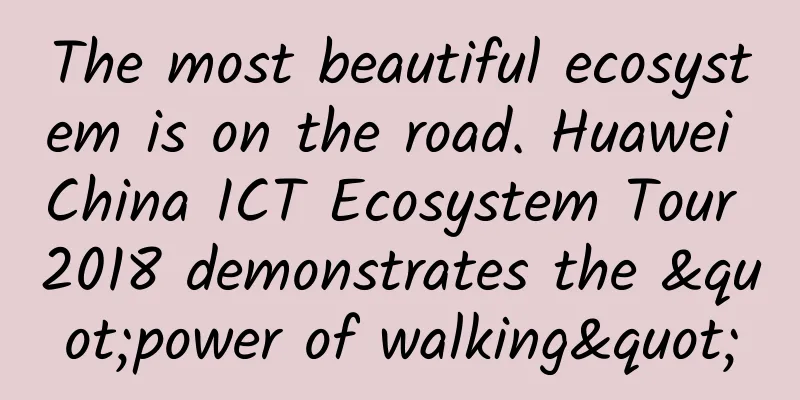Aruba: Modernizing the network to enable ubiquitous connectivity

|
Network edge is an inevitable trend, and user needs are also changing. Under the influence of the epidemic, hybrid office has higher and higher requirements for IT networks. Users need personalized experience and efficiency improvement, and enterprises need to accelerate digital transformation. The way to meet these needs is to realize network modernization, including network automation, saving manpower with the help of AI technology, ensuring network security, and building a scalable and agile network. Yu Shidan, technical sales director of Aruba China, said that Aruba has a complete framework to support network modernization, namely Aruba ESP (Edge Service Platform), which is not a single product, but a framework in which different products and solutions can be upgraded and adjusted. Aruba ESP (Edge Service Platform) mainly solves problems at four levels: connectivity, security protection, providing analysis and action-based capabilities with the help of AI and machine learning, and the consumption model of NaaS (Network as a Service). Modernize your network at four levels In terms of connectivity, Aruba has released a new Wi-Fi 6E series of products for mobility in hybrid office scenarios. To connect the edge to the cloud, Aruba has released EdgeConnect SD-WAN Fabric, which connects branch sites of different sizes through a unified SD-WAN platform. Among them, EdgeConnect Mobile is a client that can be installed on a mobile phone or laptop to connect these terminals to the cloud; EdgeConnect MicroBranch is an AP that can quickly and conveniently connect small sites to the cloud. SD-Branch is suitable for medium-sized and small-scale branches, while large branches use EdgeConnect Enterprise. All branches, regardless of size, can be managed through Aruba Central. This is the concept of SD-WAN Fabric. It is worth noting that MicroBranch can not only provide wired and wireless access and access control, but also connect to multiple clouds at the same time, such as public clouds, VPCs and data centers, to achieve a multi-cloud interconnected architecture across the entire cloud to meet user needs. Yu Shidan said that in the EdgeConnect SD-WAN Fabric solution, the EdgeConnect product line is seamlessly integrated with Aruba Central; secondly, through EdgeConnect SD-WAN Fabric, Aruba can provide users with more flexible SD-WAN networking options; thirdly, EdgeConnect MicroBranch is a cost-effective solution that will have extremely wide applications. In terms of security, Aruba has released Cloud Auth, a cloud-based AAA service platform, which is a new feature and service added after the upgrade of Aruba Central. It can help users to authenticate and authorize users in the cloud, such as role creation and policy distribution. In addition, Aruba ESP integrates Aruba Central NetConductor into Aruba Central, which can perform automatic configuration and distribution of zero-trust security and secure access service edge (SASE) security policies, greatly improving network security. Central NetConductor applies artificial intelligence for management and optimization, implements business-oriented workflows, automates network configuration, and performs cloud-native network access control (NAC) and dynamic segmentation throughout the architecture, thereby enhancing Aruba's industry-leading built-in security. Because Aruba Central NetConductor is based on widely used protocols such as EVPN, VXLAN, and BGP, it can run seamlessly on existing Aruba networks and third-party vendors' infrastructure and protect existing investments. In order to optimize data center performance and reduce data center construction and operation and maintenance costs, Aruba released the Aruba CX 10000 series switches. The CX 10000 series is a new generation of high-performance data center switches, which combines the best-in-class Aruba data center L2/3 switches with the industry's only fully programmable DPU (Pensando Elba) to provide state-based software-defined services in an inline and large-scale manner. Its scale and performance are far higher than traditional data center L2/3 switches, but the total cost of ownership is only a small part of L2/3 switches. At the analysis and processing layer, Aruba launched the world's first self-positioning wireless network, which uses 802.11mc precise time measurement (FTM) technology to improve Wi-Fi positioning accuracy to about 2 meters, a significant improvement over the original 8-10 meters. Moreover, with FTM technology, Aruba's APs can achieve self-positioning, obtain more accurate AP location information, and provide positioning services as a reliable absolute reference. To better help IT departments manage networks and understand user experience, Aruba launched the UXI User Experience Sensor two years ago to visualize user experience. In the past, UXI provided services to customers in the form of dedicated hardware. Now Aruba has turned it into software and integrated it into Zebra handheld terminals. It can continuously monitor the performance and experience of Zebra handheld terminals when connected to the network. It can not only know what problems the handheld terminals encountered and when, but also realize the location tracking of handheld terminals based on FTM. In the service field, Aruba launched an IoT operation and maintenance dashboard, providing an open platform similar to the APP Store for all IoT applications, helping third-party ecosystem partners to easily integrate IoT applications into Aruba Central and provide them to users for download and use. Focus on key industries and increase service investment Xie Jianguo, General Manager of Aruba China, said that all the products released by Aruba globally are sold in the Chinese market and have achieved good sales and market share. Aruba's solutions focus on Edge to Cloud, which is suitable for the hybrid office and remote office trend in China. Aruba's market strategy in China has always been to focus resources on key industries and pay attention to solving users' actual business problems. For example, the business problem of colleges and universities is to ensure stability in a high-traffic, high-density environment. In a production environment, it is necessary to ensure that the production line does not drop and the positioning is accurate. At the same time, Aruba has increased its investment in service resources this year, such as after-sales service, user service monitoring, etc. It has also opened up some new product markets, such as Wi-Fi 6E and the acquired Silver Peak. |
<<: Three years after the license was issued, has 5G commercialization been successful?
Recommend
Huawei Receives "Excellent" Certification for Technical Support from TSIA, the Technical Services Industry Association
[Shenzhen, China, November 4, 2019] Recently, at ...
BuyVM: $3.5/month KVM-1GB/20GB/1Gbps unlimited traffic/Las Vegas data center
BuyVM Las Vegas has currently restocked a large n...
China will soon become the global center of artificial intelligence technology
What role will China's artificial intelligenc...
After 6G, will there be 7G and 8G?
But in any case, from 1G to 5G, it has developed ...
Xinhua Commentary: The "invisible threshold" for number portability should be removed
When checking the eligibility for number portabil...
Operating data of the three major operators in November: 5G package users exceeded 700 million
Recently, the three major operators announced the...
Did you understand the three stories Guo Ping told at the Huawei Connect Conference?
[51CTO.com original article] Just last week, the ...
If you still don’t understand HTTPS after reading this article, come to me!
As an aspiring programmer, it is necessary to und...
Diagram: Page replacement algorithm
[[398509]] This article is reprinted from the WeC...
Huawei launches MAE-Litem, the world's first integrated converged website for wireless, transmission, and core networks, making digital transformation in the industry a breeze
Recently, the 16th International Coal Expo was he...
HostXen Double 11 recharge 300 yuan to get 50 yuan / recharge 500 yuan to get 100 yuan / recharge 1000 yuan to get 10% off the whole site, Hong Kong 2G memory VPS monthly payment starts from 50 yuan
HostXen is a DIY cloud hosting platform that star...
What is WebSocket and how is it different from HTTP?
HTTP HTTP is one-way, the client sends a request ...
IPv4 addresses are exhausted. Let’s discuss IPv6 penetration and IP migration complexity.
[[283967]] As a basic resource, IPv4 has supporte...
AI and blockchain: What kind of sparks will the collision of these two popular technologies create?
Editor's note: Blockchain and AI are the two ...
Configure HTTPS for React applications running locally
If you build an application with create-react-app...









